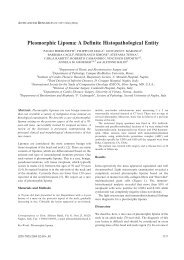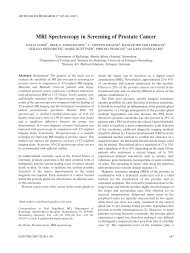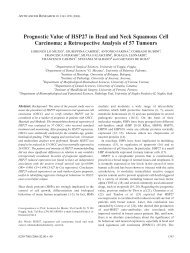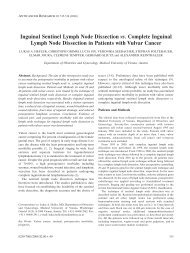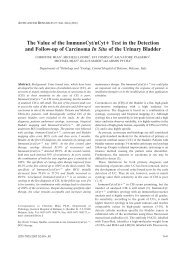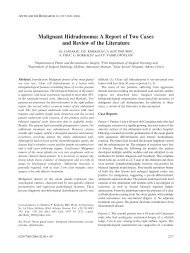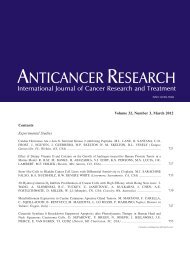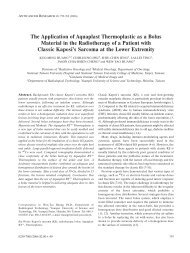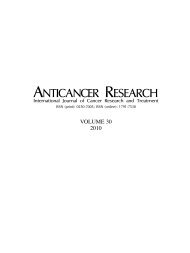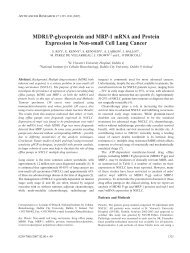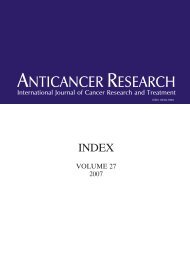ABSTRACTS OF THE 21st ANNUAL MEETING OF THE ITALIAN ...
ABSTRACTS OF THE 21st ANNUAL MEETING OF THE ITALIAN ...
ABSTRACTS OF THE 21st ANNUAL MEETING OF THE ITALIAN ...
Create successful ePaper yourself
Turn your PDF publications into a flip-book with our unique Google optimized e-Paper software.
(145 Gy) in 380 patients and as a boost (100 Gy) in<br />
association with external beam radiotherapy (45-50.4 Gy) in<br />
29 patients. A short course of hormonal therapy was<br />
performed pre-BT in 153 patients. The median age was 66<br />
years (49-78); the NCCN risk class was low, medium and<br />
high in 68%, 30% and 2% of the patients, respectively. CTbased<br />
dosimetry at four weeks was used for post-planning<br />
evaluation. D90 and V100 were recorded for each patient,<br />
along with other dosimetric and clinical parameters.<br />
Biochemical relapse was defined according to Phoenix<br />
ASTRO Consensus Conference (nadir +2 ng/ml). From<br />
March 2005, QL was prospectively assessed by a self-filled<br />
QL validated questionnaire in a consecutive series of 228<br />
patients. Results: A D90≥100% of prescribed dose and a<br />
V100 ≥90% of prostate volume were achieved in 83% of<br />
patients. After a median follow-up of 55 months, 36 patients<br />
developed biochemical relapse, with a clinical component in<br />
8 patients. The 5- and 10-year relapse-free survival (RFS) was<br />
92% and 79%, respectively. At this time, 30 patients had died<br />
(27 relapse-free), with a 5- and 10-year overall survival of<br />
93% and 85%, respectively. The 5- and 10-year RFS in lowrisk<br />
cancer was 95% and 80% vs. 88% and 73% in<br />
intermediate-high risk (p: NS). Patients with better dosimetric<br />
parameters (V100≥90% and D90≥100%) had a better RFS (5and<br />
10-year: 95% and 82% vs. 80% and 62%; p



